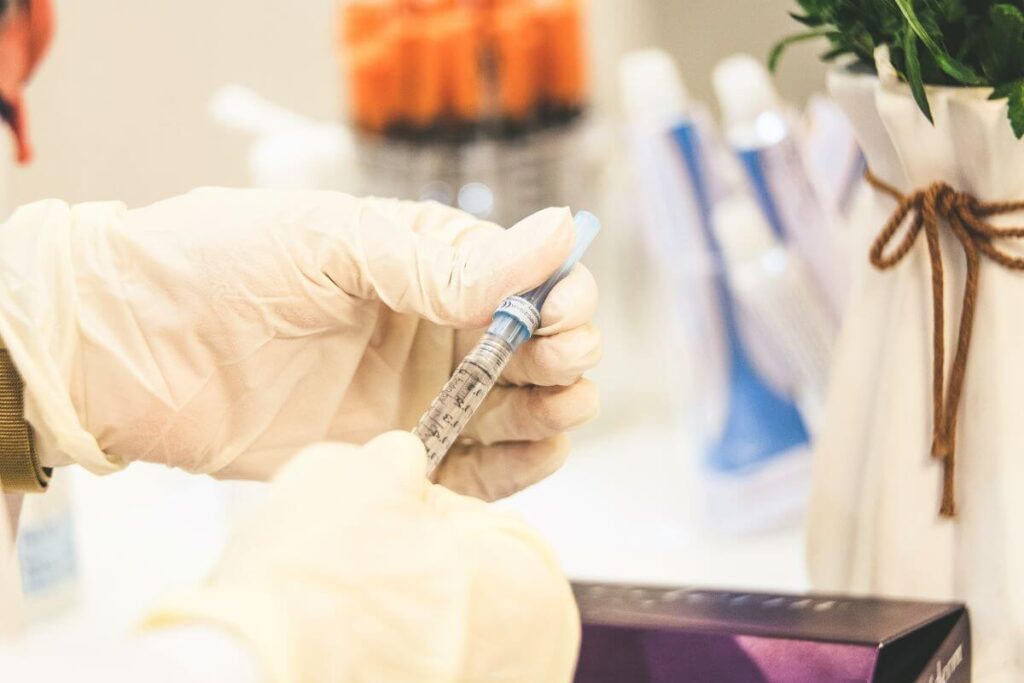Phase I and Phase II clinical trials are the first stage of testing a new medical treatment, drug, or device in human subjects. The purpose of these early-stage trials is primarily to assess the safety, tolerability, and potential side effects of a new treatment. You may also be interested in exploring early-phase oncology trials or Phase I CRO services.
The development of early phase clinical trials.
Early phase clinical trials follow preclinical studies, which are typically conducted in laboratory settings or on animals. Both preclinical and early phase clinical research provide important information on the treatment’s safety, efficacy, and appropriate dosage. Early clinical research includes both Phase I and Phase II trials.
Preclinical Studies
Before a new drug is tested in human subjects, researchers must evaluate its safety and efficacy through a series of studies. This typically includes in vitro (test tube) studies, in vivo (animal) studies, pharmacokinetic (PK) and pharmacodynamic (PD) studies. The length and design of each study is dependent on the intended clinical use of the final therapeutic.
Vitro Studies
The initial step in preclinical testing usually involves in vitro studies, which are conducted using cells, tissues, or other biological samples. This type of research is performed in a controlled environment outside a living organism, such as in a test tube or petri dish, to observe how experimental variables affect cellular components. In vitro studies help determine the basic properties of a drug, including how it interacts with cells and its effects at the cellular level.
Due to greater scientific advances, these studies are becoming more sophisticated, enabling researchers to use the data derived from in vitro studies to help reduce the number of live animals required on a subsequent study or even as a complete replacement for live animal trials.
Vivo Studies
In vivo studies are conducted on live organisms such as mice and rats to evaluate how safe and effective the drug is and any potential side effects. These studies follow multiple regulatory guidelines and are closely matched to the intended clinical administration protocol. These studies can take anything from a few months to several years, depending on how often and for how long the final treatment will be taken by the patient.
Pharmacokinetic (PK) and pharmacodynamic (PD) studies
Pharmacokinetic (PK) and pharmacodynamic (PD) studies are also conducted during preclinical studies. PK studies evaluate how the body processes a drug, including how it is absorbed, distributed, metabolised, and eliminated. PD studies evaluate the biochemical, physiological, and molecular effects of a drug.
Any treatment approved for human administration must be vetted by quality preclinical research. For example, a medication intended for long–term use, such as those used to treat epilepsy, will typically require a more extensive preclinical testing program than a short-term treatment like an antibiotic. Results from preclinical studies at this stage should show strong evidence for efficacy in human subjects to advance to clinical trials. The final decision is made by the relevant regulatory authority, such as the Food and Drug Administration) FDA in the USA or the European Medicines agency (EMA) in Europe.
Early phase clinical research
Early phase clinical development, Phase I and Phase II studies, have a limited number of participants, typically ranging from 20-80 volunteers, and the duration of the trial can vary depending on the nature of the treatment, but it can take several months from study initiation to production of the draft report.
In the Phase I trial, also referred to as a first-in-human trial, participants are given the treatment in escalating doses. This process allows researchers to perform a safety evaluation of the drug at different volumes. Sometimes, Phase I trials include pharmacokinetic studies, which allow researchers to determine the appropriate drug concentration.
These first-in-human clinical trials are conducted under strict safety guidelines, with potential participants provided with detailed information about the trial before providing their consent to participate. Those screened and selected by researchers are then closely monitored throughout the trial, with any adverse reactions or side effects recorded and reported.
It’s common for pharma companies to partner with a Clinical Research Organisation (CRO) to conduct the Phase I clinical trials. As specialists, they can provide the necessary expertise, facilities, and support, and will have extensive experience in operating under the strict safety guidelines.
There are three stages of clinical trials, and Phase I is just the first step. Early Phase clinical development is often also used to include Phase II trials.
Early phase development approval
If treatments don’t meet regulatory standards during the early phases of trial, the drugs won’t be tested and developed further. If the drug is determined to be safe, tolerable, and effective by regulatory bodies, then they progress on to the next stage. However, a report published in 2021 found that of Phase I trials conducted in the USA between 2011 to 2020, the success rate was just 52%.
Safety in early phase trials
During clinical safety testing, a new drug is first administered to a small group of healthy volunteers. Safety evaluations involve a series of different tests, such as:
- Vital Sign Monitoring: Blood pressure, heart rate, and temperature are regularly checked to ensure the drug does not negatively affect the body’s vital systems.
- Laboratory Tests: Blood and urine samples are analysed to detect any changes in chemical or enzyme levels that might indicate a safety concern.
- Physical Examinations: Medical professionals perform physical exams to identify visible side effects, such as rashes, swelling, or other adverse symptoms.
- Questionnaires and Interviews: Volunteers may complete questionnaires or take part in interviews to report their experiences, including any symptoms or changes in overall health.
This comprehensive approach helps identify any risks or side effects and ensures the new drug is safe before it progresses to later trial phases involving patients.
Tolerability in early phase trials
Tolerability is another fundamental aspect evaluated during the early phase of clinical research. It refers to how well the drug is tolerated in human subjects without or with minimal adverse reactions.
During the tolerability testing stage, the new drug is given to a small group of healthy volunteers. Any negative reactions or side effects such as nausea, dizziness, headache or fatigue are recorded as part of the tolerability profile.
If a drug is found to have poor tolerability, modifications can be made to the drug. Dosage can be changed, formula can be amended, and or a different administration method can be used to improve the treatment tolerability. Alternatively, the pharmaceutical company may decide to stop the trial completely and discontinue the drug’s clinical development.
Efficacy in early phase trials
Efficacy is usually continuously investigated throughout the clinical development process, in Phase II and Phase III, whilst Phase I efficacy tests are intended to give a broad idea of how effective the drug is at producing the desired therapeutic effect.
The new drug is given to a group of patients with the disease or condition of interest to assess its ability to produce the desired therapeutic effect. The efficacy is evaluated by measuring the change in the disease or condition after taking the drug, compared to a control group that receives a placebo or standard treatment. The efficacy testing can include a variety of different tests and assessments, such as:
- Clinical outcome: This can include measuring the size of a tumour, changes in blood pressure, or improvement in patient symptoms.
- Quality of life: Questionnaires can be used to measure the patient’s quality of life, such as their ability to perform daily activities, their emotional well-being, and their level of pain.
If a drug is found to be ineffective or if it does not produce a significant therapeutic effect compared to the control group, the trial may be stopped, and the drug will not be allowed to move on to the next Phase of testing. However, if the drug is found to be effective, it will be approved for further clinical development. In Phase III, its safety and tolerability will be evaluated in a larger patient population.
Failing Phase I trials
If a drug fails Phase I trials, the pharmaceutical company that developed it may choose to discontinue its development or make modifications to the drug before attempting to re-test it. The reasons for failure in Phase I trials can vary, but it is often due to issues with previously mentioned milestones during clinical development Phases. When a drug fails during the first stage of a clinical trial, pharmaceutical companies must carefully evaluate the data collected to determine their next steps.
Potential Outcomes After Phase I Failure:
- Discontinuation of Development: Developing treatments is costly, and a phase I failure can hinder the project entirely to avoid further financial risk
- Alternative Indications: If the failure is due to a lack of efficacy, the drug may be explored for alternative diseases or conditions where it might prove beneficial.
- New Formulations or Delivery Methods: Pharmaceuticals may also investigate different dosages, formulations, or routes of administration (e.g., oral vs. injectable) to enhance the drug’s safety or effectiveness.
The Role of Contract Research Organisations (CROs)
The role of Contract Research Organisations (CRO) is essential in supporting early-stage drug development. CRO’s offer comprehensive Phase I clinical trial services, including:
- Study design and execution
- Pharmacovigilance and regulatory support
- Oncology and specialty therapeutic area expertise
Pharmaceutical Biotechnology companies that partner with experienced CRO’s, such as Simbec-Orion, gain access to specialised resources and infrastructure, helping to reduce the risk of trial failure and accelerate development timelines.
Conclusion
Early phase clinical trials are a fundamental step in the drug development lifecycle, designed to evaluate the initial safety and tolerability of a new drug. The outcome of these trials determines whether a compound can move forward in the clinical development process. Whether continuing development, exploring new indications, or modifying the drug, decisions at this stage have a significant impact on the future of the drug candidate.
Early phase support with Simbec-Orion
CROs can be helpful in making sure that the Phase I trial goes well, as they have the expertise and resources to conduct the clinical study safely and efficiently.
Simbec-Orion is well-equipped to support these trials with our vast experience in early phase research. We offer a highly adaptive and agile approach to early phase clinical research and trials, tailored to meet the specific needs of each research project. Our services range from full study design to Investigational Medicinal Product (IMP )management.
We always work to ensure patient safety and maximise the likelihood of success of new drug development. With Simbec-Orion’s experience and expertise, companies can have peace of mind knowing that their early phase trials are in capable hands.
With nearly five decades of experience as a full-service CRO, we collaborate with global organisations to deliver high-quality, impactful clinical trials. To find out more about how we can support your next study, contact us via our online form.






